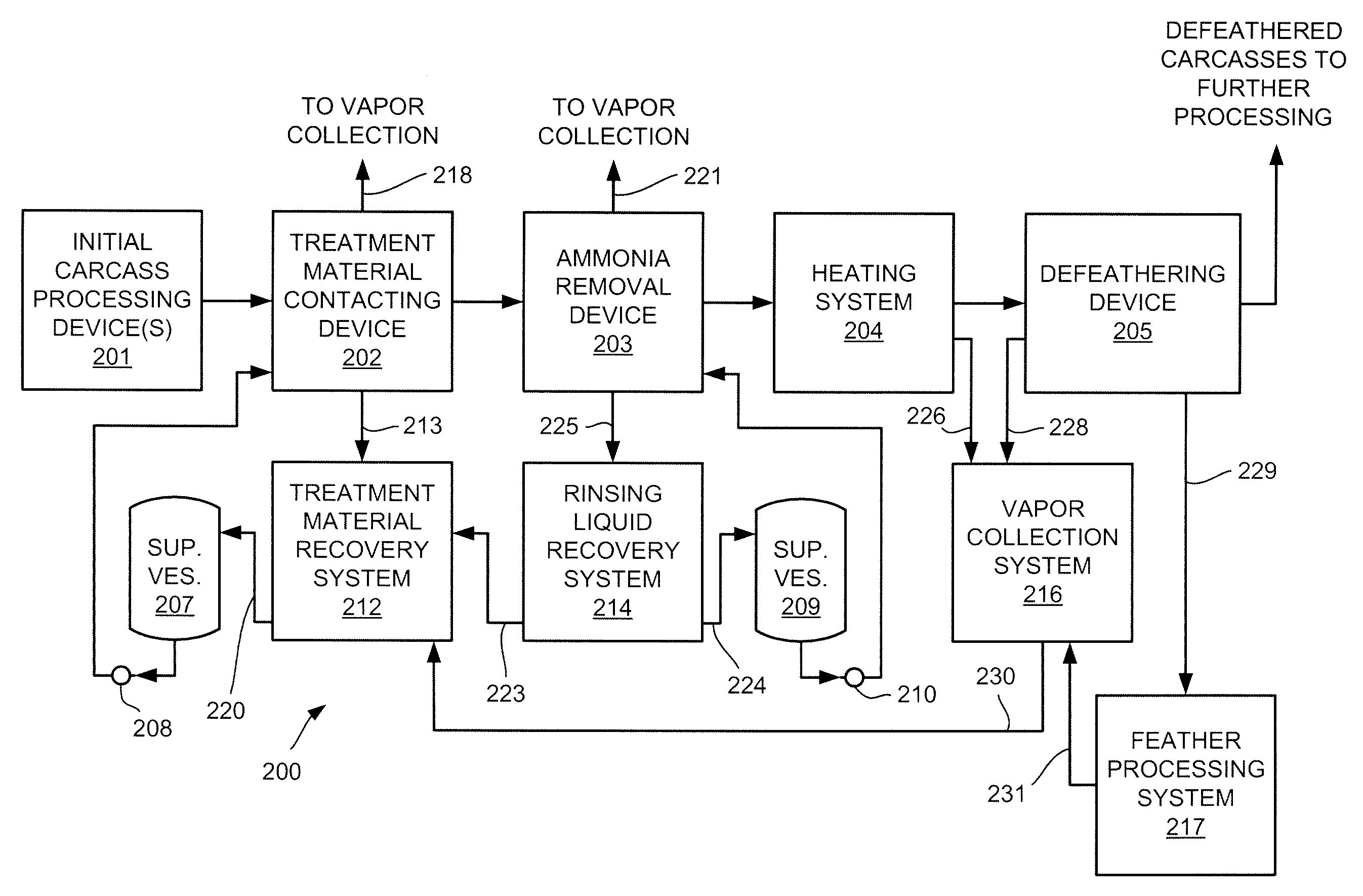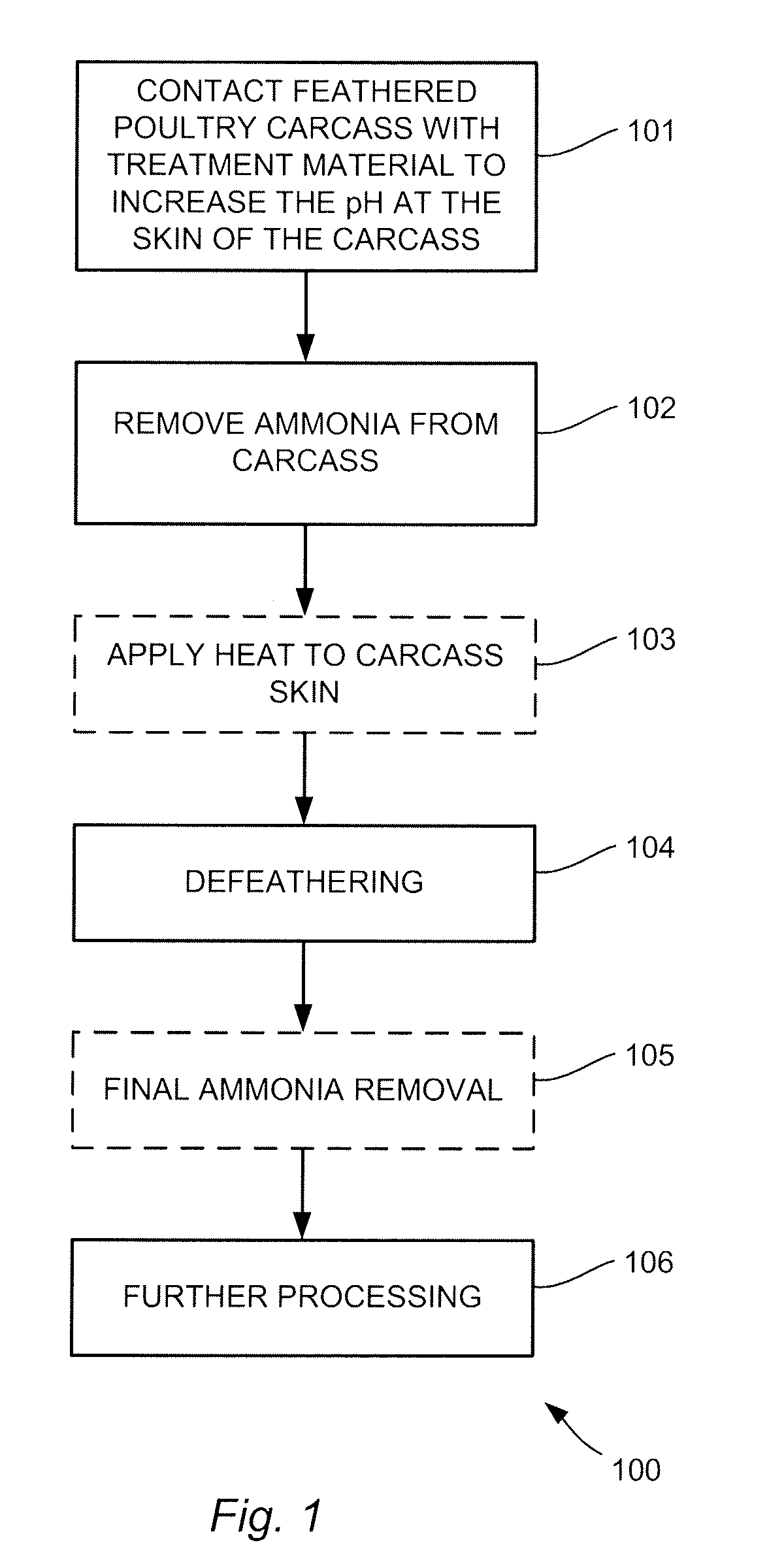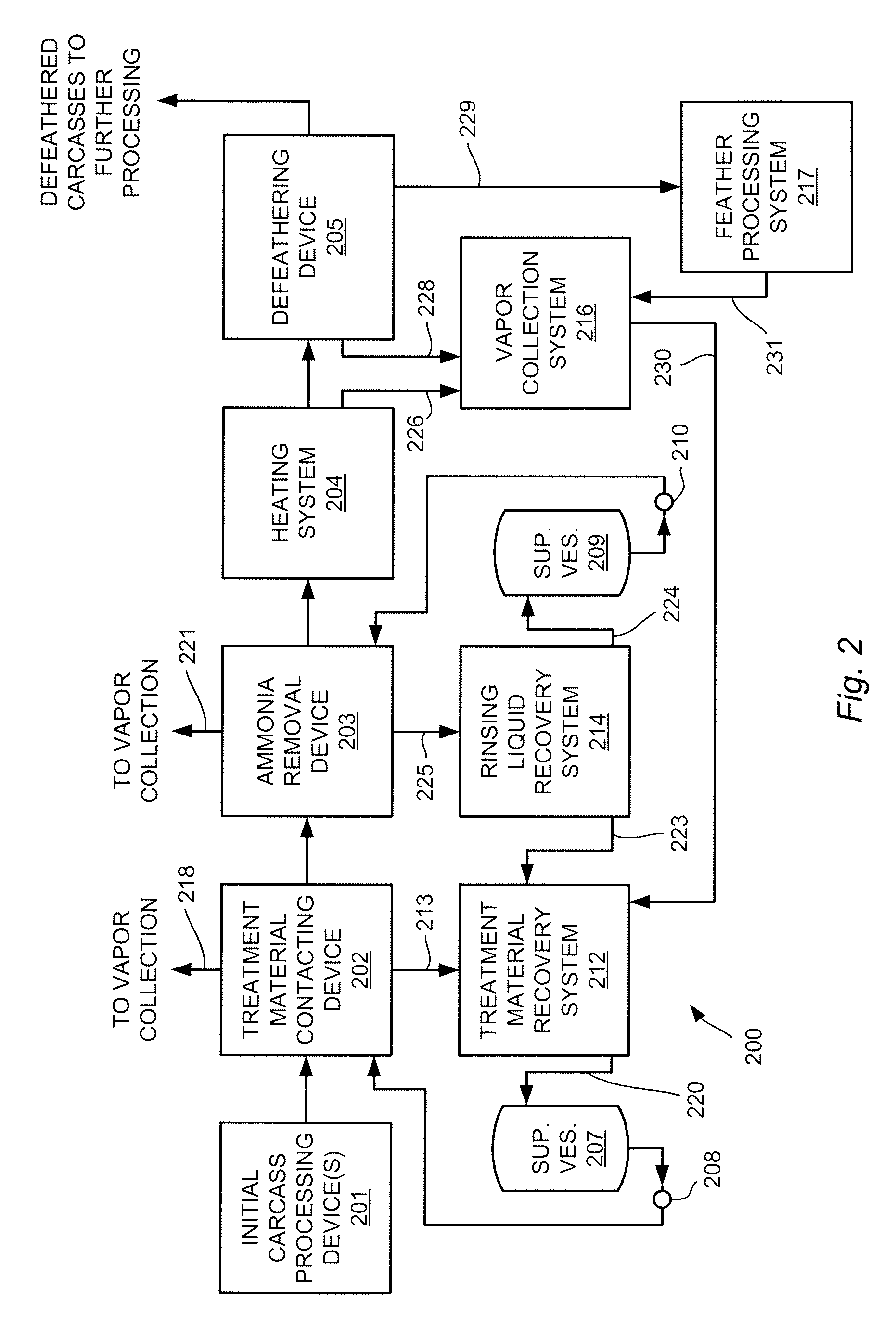Method and apparatus for preparing poultry carcasses for defeathering operations
a technology of defeathering and carcasses, which is applied in the field of poultry processing, can solve the problems of cross contamination with other carcasses, significant bacterial load, and serious problem of bacterial contamination in poultry processing, and achieve the effect of reducing the heat level
- Summary
- Abstract
- Description
- Claims
- Application Information
AI Technical Summary
Benefits of technology
Problems solved by technology
Method used
Image
Examples
Embodiment Construction
[0020]In the following description of illustrative embodiments, a preferred process according to the present invention and certain variations in that preferred process will be described with reference to the flow diagram of FIG. 1. Three preferred systems for performing processes according to the invention will be described in connection with FIGS. 2, 5, and 6. Specific treatment material application techniques and ammonia removal techniques will be described in connection with the devices shown in FIGS. 3 and 4.
[0021]Referring now to FIG. 1, a process 100 according to the present invention includes contacting a feathered poultry carcass with an ammonia-based treatment material as shown at process block 101. This contact with the ammonia-based treatment material preferably increases the pH at the skin of the carcass at least one-half (0.5) point on the pH scale. After the contact with the ammonia-based treatment material at process block 101, the method includes removing ammonia fro...
PUM
 Login to View More
Login to View More Abstract
Description
Claims
Application Information
 Login to View More
Login to View More - R&D
- Intellectual Property
- Life Sciences
- Materials
- Tech Scout
- Unparalleled Data Quality
- Higher Quality Content
- 60% Fewer Hallucinations
Browse by: Latest US Patents, China's latest patents, Technical Efficacy Thesaurus, Application Domain, Technology Topic, Popular Technical Reports.
© 2025 PatSnap. All rights reserved.Legal|Privacy policy|Modern Slavery Act Transparency Statement|Sitemap|About US| Contact US: help@patsnap.com



